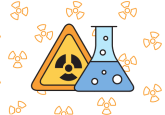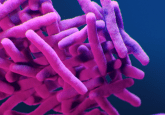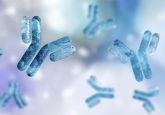LBA and critical reagents: an interview with Zhongqiang Qiu

In this interview, we explore the basic principles of LBA, as well as the associated benefits and challenges. We also review how LBA may be used in the bioanalytical field in the future.
 Zhongqiang Qiu, Ph.D.
Zhongqiang Qiu, Ph.D.
Group Leader, Biologics
Frontage Laboratories (FL, USA)
Zhongqiang is currently the Group Leader of the Pharmacokinetics team at the Biologics Service Department at Frontage Laboratories. He received his Bachelor of Science degree in Biology from Wenzhou Medical University, China, in 2007. From 2008 to 2014, he worked as a Forensic DNA scientist at the Wenzhou Institute of Criminal Science and Technology, where he processed DNA analysis for more than 100 thousand blood samples. Zhongqiang received his Ph.D. in 2020 and joined Frontage Labs in April 2021. Here he works on the development of new methods for PK immunoassays. He has solid experience with PK method validation and sample analysis under regulated environments using ELISA, MSD, and Gyrolab platforms. Currently, he manages the Gyrolab platform at Frontage, working closely with Frontage’s scientific team to finish several large Gyrolab platform studies.
This interview is a part of the Bioanalysis Zone Spotlight feature on LBAs and critical reagents. For more expert opinions on this topic, visit our feature homepage
1. What are the basic principles of LBA and how are they currently being utilized in the bioanalytical field?
The basic principle of LBAs is based on the interaction between analyte and anti-analyte antibodies labeled with ruthenium (electrochemiluminescence tag), HRP (colorimetric producing enzyme), or Alexa 647 (fluorescent tag) to proportionally quantitate analytes using electrochemiluminescence or ELISA or Gyros assay methods. Current LBA methods are used in PK, ADA, Nab, and biomarker bioanalytical studies.
2. LBA instrumentation is constantly progressing with regards to selectivity and sensitivity. What emerging technologies are you most excited about?
Most of the lab work is done with a programmed automation process to maintain the consistency of each step of the procedure to control sample data variation without sacrificing the sensitivity and selectivity of the assay method. Lab automations can help pave the way for scaling up while maintaining data integrity, quality, and efficiency in the processes.
3. What are the main challenges to consider when using LBA and how can we overcome these?
Main challenges such as specificity and sensitivity of anti-analyte antibodies need to be considered. We prefer to use monoclonal antibodies instead of polyclonal antibodies as capture and detection reagents. If a high binding affinity mAb is not available, a target of the test article may be used as the capture reagent, and anti-IgG4 mAb, if the isotype of the test article is IgG4, can be chosen as the detection antigen.
4. What are the critical reagents needed for LBA and what role does Frontage play in critical reagent acquisition?
Critical reagents in LBA usually refers to standard references, capture antibodies, detection antibodies, and the matrix. The standard reference is typically provided by the sponsor. The capture and detection antibodies are developed and tested by the sponsor based on the property of the standard references. Vendors usually ship them to Frontage during method transfer. They can provide the labeled capture and detection antibodies to us, such as biotinylated, ruthenylated, or Alexa 647 depending on the assay formation and chosen platform. In some cases, we can order commercialized antibodies for the assay, like Alexa 647 labeled goat anti human IgG. For the matrix, such as human serum, human plasma, monkey serum, and others, these are usually ordered from vendors like BioIVT. Once received, critical reagents are stored and managed by Frontage Sample management for inventory maintenance and supply.
5. What are the main advantages to using LBA for drug development?
For large molecule-based drugs, LBA can achieve a high sensitivity of assay methods, so a better fit to a low dosing level pre-clinical drug development study.
6. How do you think LBA will evolve in the next 5-10 years’ time? Are we going to see significant changes in terms of the platforms being used?
In the future, more specific critical reagent production method will be available, and more sensitive detection instruments will be made. With the assistance of more specific Ab anti-analyte, and more sensitive detection instrumentations, we can develop assays with higher sensitivity and specificity.
In association with:







